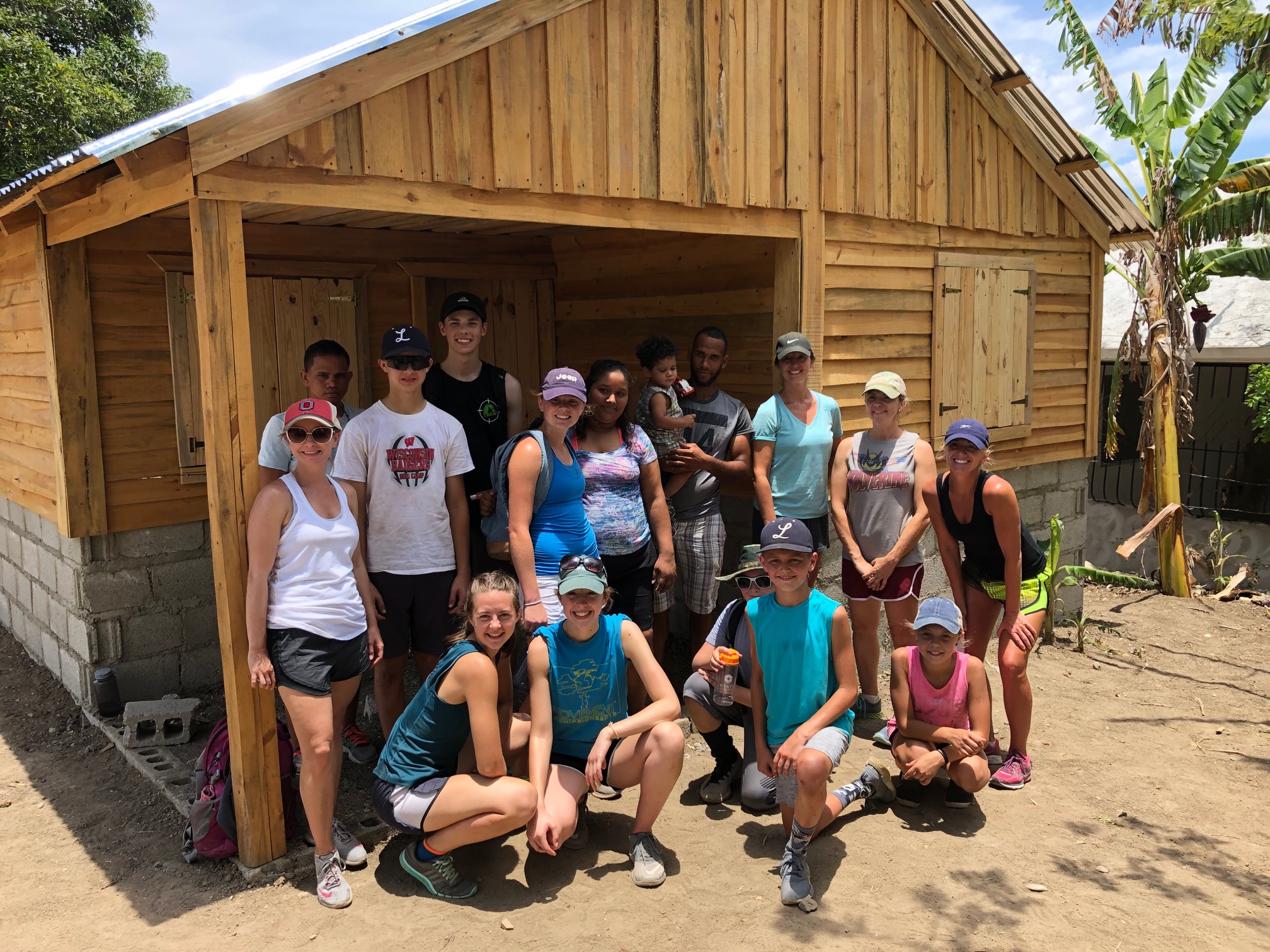
Have you ever dreamed of volunteering in the Dominican Republic? Giving back to those in a third world country is such a blessing to those in need. The funny thing is, you’ll end up feeling blessed as well.
This post contains affiliate links – I may earn a small commission from qualifying sales.
Does the thought of building a house seem like a daunting task? What if I add that no electrical tools are used? Amazingly, with teamwork, a bit of elbow grease and determination, a home can go up in about 8 days in the Dominican Republic through Village Mountain Mission.
The home is roughly the size of a one car garage in the United States. In the DR, a structure of 18’x20′ will be large enough to house 3-8 family members.
My First Time Volunteering in the Dominican Republic
At the start of my first trip, I couldn’t even wrap my mind around how we would build a house in such a short amount of time. With blueprints in hand and a great supervisor on the site, I was soon to find out.
Building the Home
It all starts by digging a footer. The land that the home is to be built on varies quite a bit. I’ve dug in sand, in dirt that was so compacted it felt like cement and in the Barrio. When digging in the Barrio, a person might dig 6-8″ down and find a shoe, a discarded bottle, a tin can, broken glass, or a pair of underwear. The reason for this is because the Barrio was once a landfill; now, it’s an area for many families who call it home.
Once the footer is deep enough, cement is poured, leveled out, and cinder blocks are laid. The cement is all mixed by hand on the ground or in a wheelbarrow. The cinder blocks are stacked 6 rows high. This process takes a volunteer group, depending on their size, 2-3 days. It’s not a something that can be rushed because measurements are constantly being taken to make sure the rows are going up level, straight and squared off.
Next comes my favorite part – sawing and nailing. The key to success is to have a good, sharp saw. I always bring one down with me. The salty air and the humidity run havoc on all the metal items so tools don’t last long.
*Volunteer Tip*
Hammering, sawing and drilling by hand are not something that volunteers do on a regular basis when they are home. Be sure to bring a pair of work gloves. You are encouraged to take short breaks during the day and to drink lots of water.
Finishing the Home
Studs, siding, doors, windows, trusses and gables are all made by the volunteers. This part of the project takes about 6 days. One volunteer crew starts the home and the following crew finishes it off. Throughout the building process crews get to know the family they are building for and many of the locals.
The volunteers typically do not do the final steps. A zinc roof is nailed down. The zinc comes in long sheets and is very sharp. The mission pays locals to do this portion along with pouring a cement floor.
Families typically will have their kitchen outside in a lean-to. This not only saves space inside the home, it keeps a lot of the heat away from the living quarters. Outhouses, set away from the house, are much more common than having indoor plumbing. Water is bought in 5 gallon jugs, assuming it wasn’t brought up from the nearby creek.
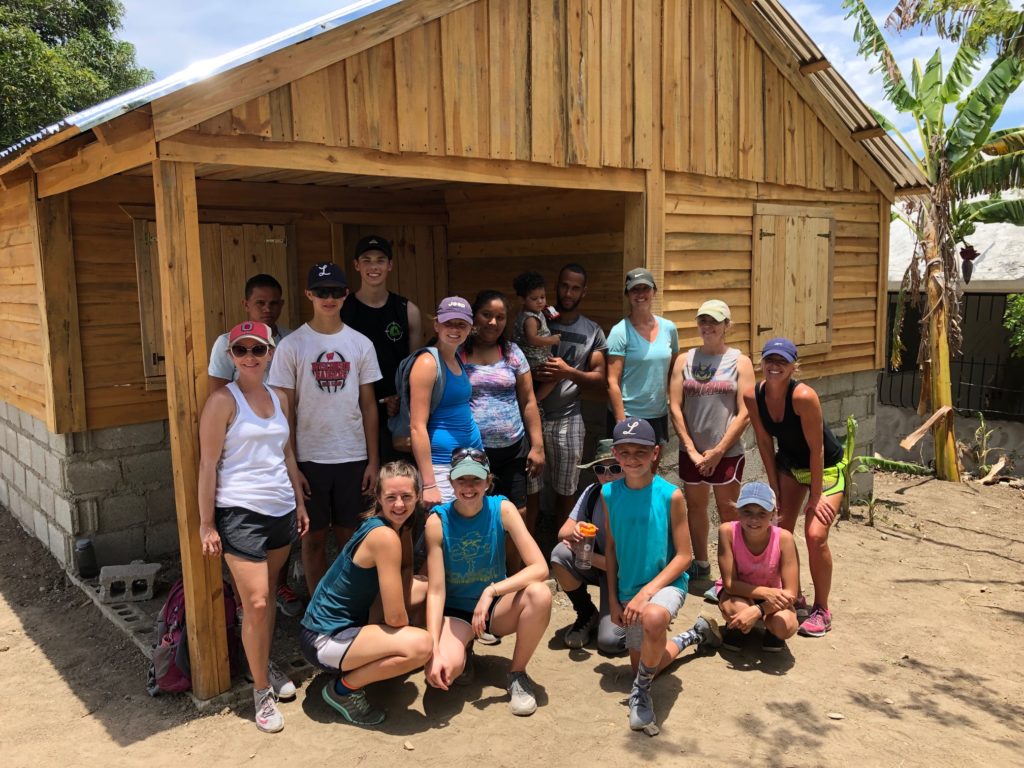
Your Week Volunteering
A typical week looks like this:
- Day 1: Arrival, set up your hammock
- Day 2: Work on the home
- Day 3: Work on the home
- Day 4: Beach day, Tour of a cacao farm and chocolate factory
- Day 5: Work on the home
- Day 6: Work on the home
- Day 7: Go to the waterfalls, Host a Carnival
- Day 8: Pack up and fly home
You will arrive at either Santiago or Puerto Plata’s airport. The mission’s driver will drive you 2 hours west to the property located near Luperon. Once you have arrived, you start setting up your hammock. This will be your ‘bunk’ for the rest of the week. Breakfast and supper are cooked by the local cooks over an open fire there on the property. The food is delicious and very authentic to the area.
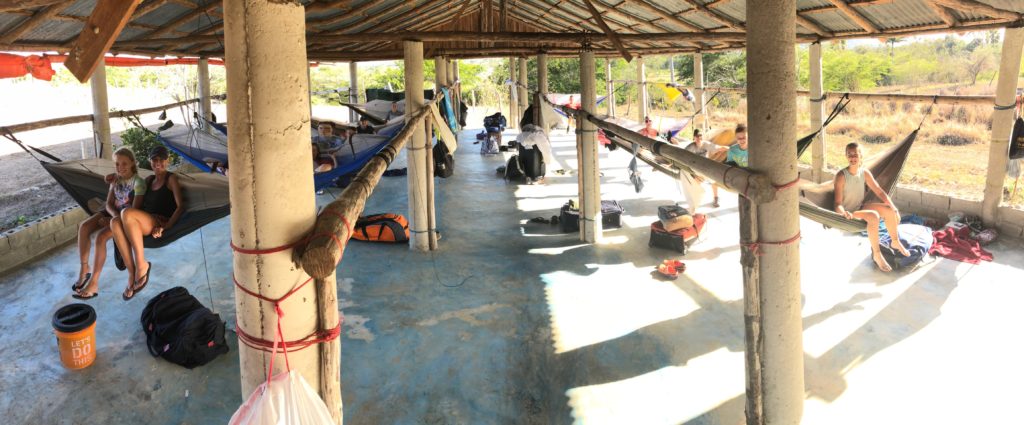
You can sleep in a small pillow round out your sleeping quarters.
Volunteers spend eight hours at the work site. Transportation is provided by the mission. The mission services many, many villages in the surrounding area so it’s hard to know exactly where you’ll be working until you actually arrive. Locations are 30-60 minutes from the property. Lunch is eaten in the shade wherever the home is being built. A water bottle, light weight work gloves, baby wipes and hand sanitizer will be your new best friends.
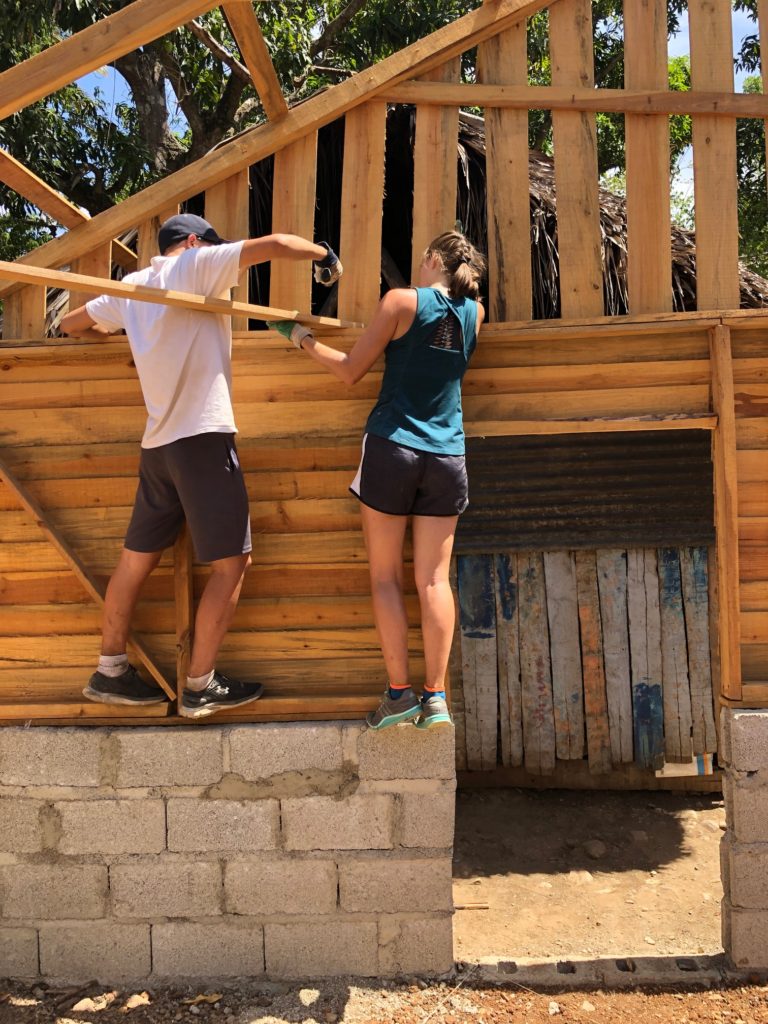
Excursions
All work and no play is never a fun balance. Your first excursion is a day for the beach, a tour of a cocoa farm and a tour of a chocolate factory where you get to make your own chocolate molds and dinner at a nice restaurant. Supporting these local businesses is very important to the mission. The chocolate factory was started by a group of women who had a vision and a lot of determination.
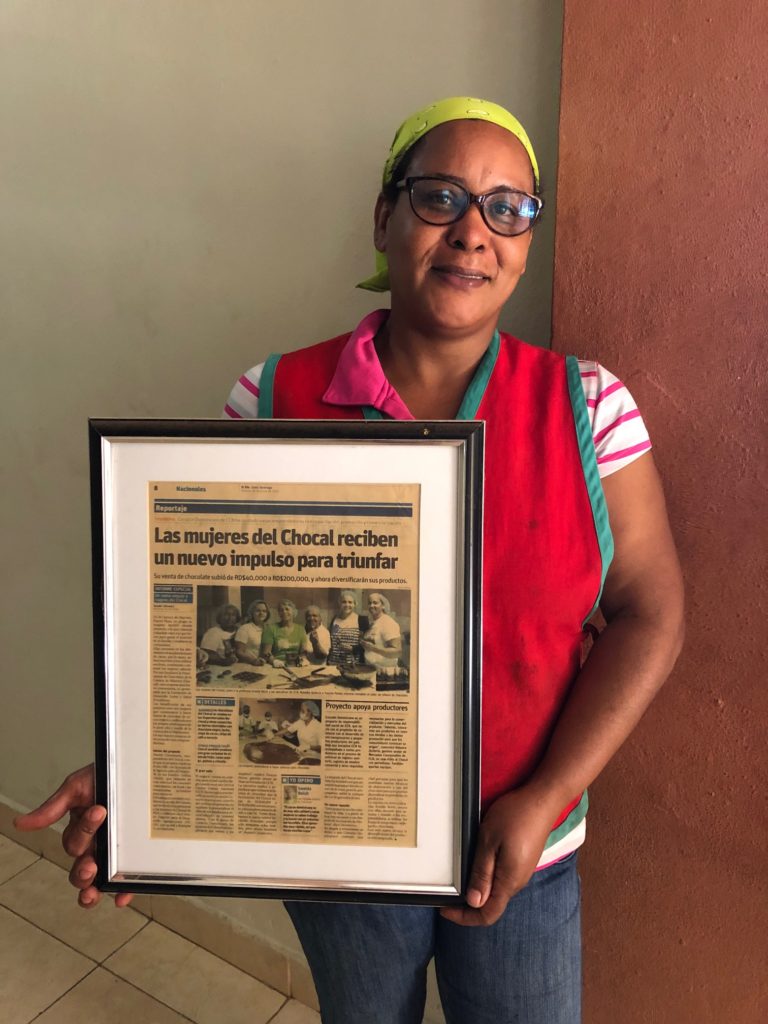
Volunteers Get to Know the Locals
Days 5 &6 are back at the work site.
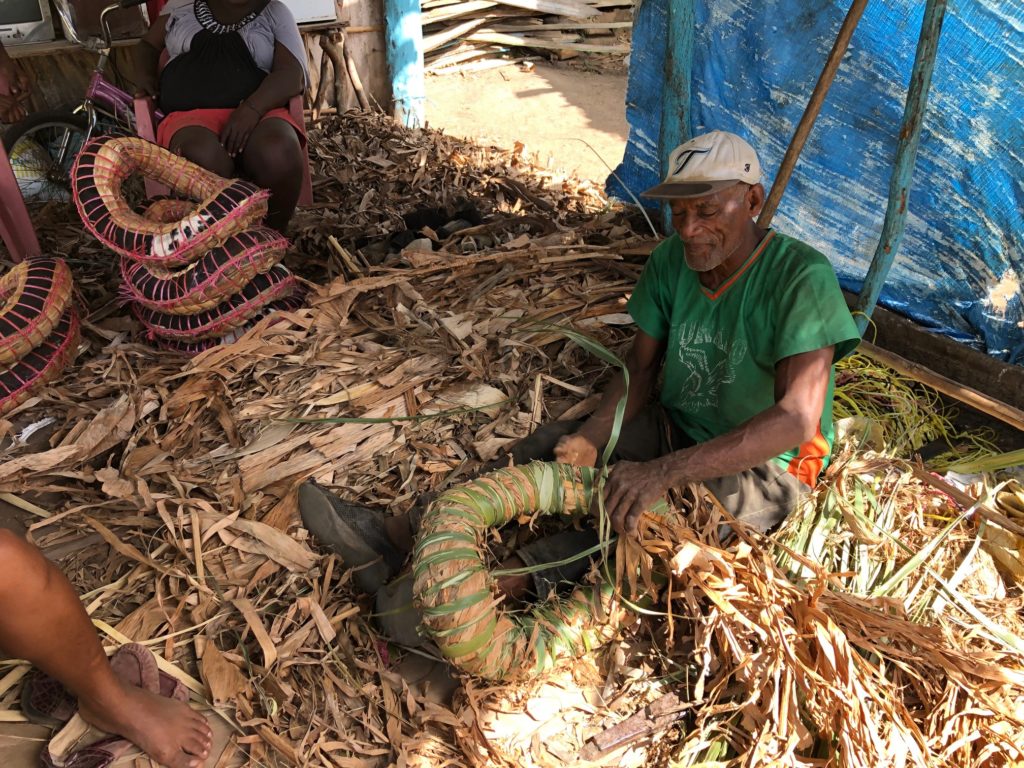
Get refreshed by spending the day at the waterfalls. They are a big tourist attraction and the fresh spring water feels exhilarating. You will need shoes that are comfortable to walk in and can get wet along with a bathing suit. Life jackets and helmets are provided.
In the afternoon, the volunteers host a fun, interactive carnival for one of the villages. Usually about 40-50 kids arrive ready to play games and have a good time. It is a great way to bond with the local children and to see, first hand, how a smile, a high five and a laugh really are universal languages. Stations to host include face painting, balloon making, making necklaces, beanbag toss, parachute games, and tug-of-war.
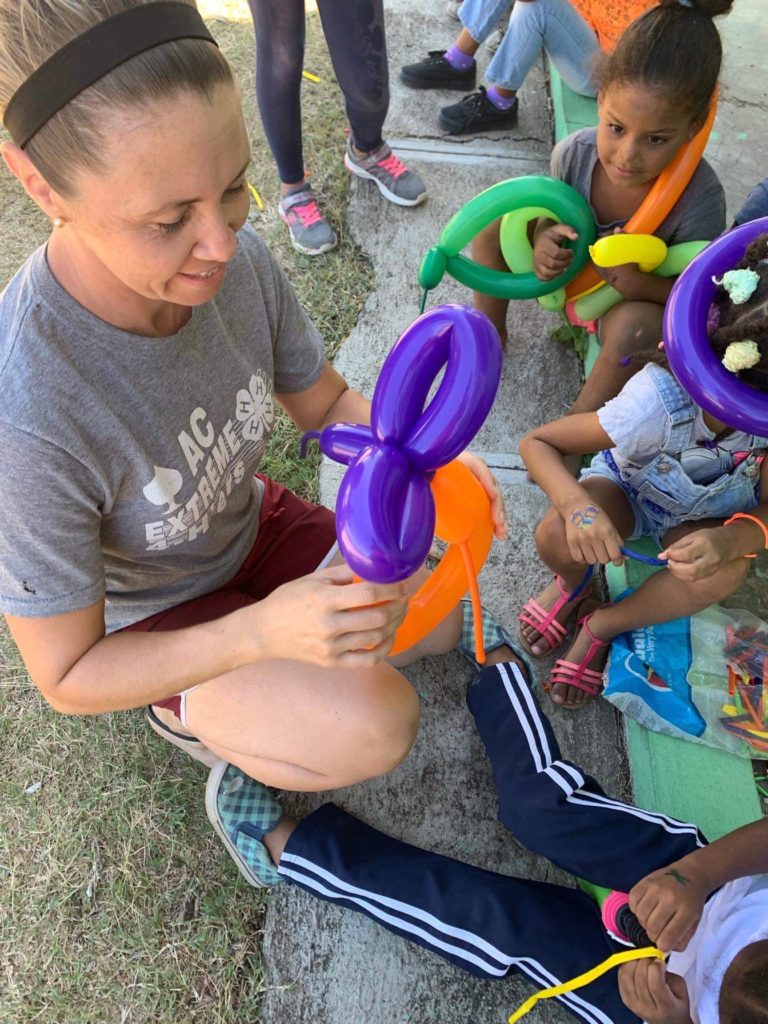
I cannot say enough about how influential this program has been for both the Dominicans and those who travel down to help. Through this mission, not only are homes being built, but lives are being changed. Having a safe, dry place to call home is the foundation for success. Time and time again we hear stories of how the family has gone on to become more self-sufficient and prosperous because the turmoil of a falling down, hole ridden home is not in the forefront of their problems any longer.
Other ways to serve
Does volunteering in the Dominican Republic sound interesting but maybe not building houses? The mission also offers oppportunities to serve medically, in a classroom setting and through Vacation Bible School. I hope you find it in your heart to consider taking a week to experience the hospility and love the Dominicans openily give to those who come to help. Please contact me through email or commenting below if you are interested in joining a group. The cost is $700 plus your airfare.
You can also read about volunteering in the Blue Mountains near Sydney, Australia. Volunteering can be a great option to off set the cost of travel.